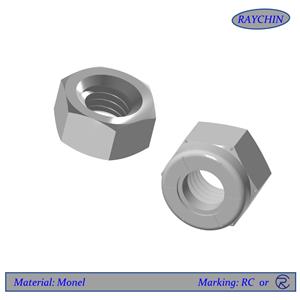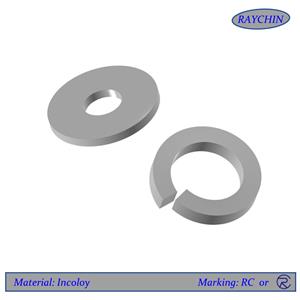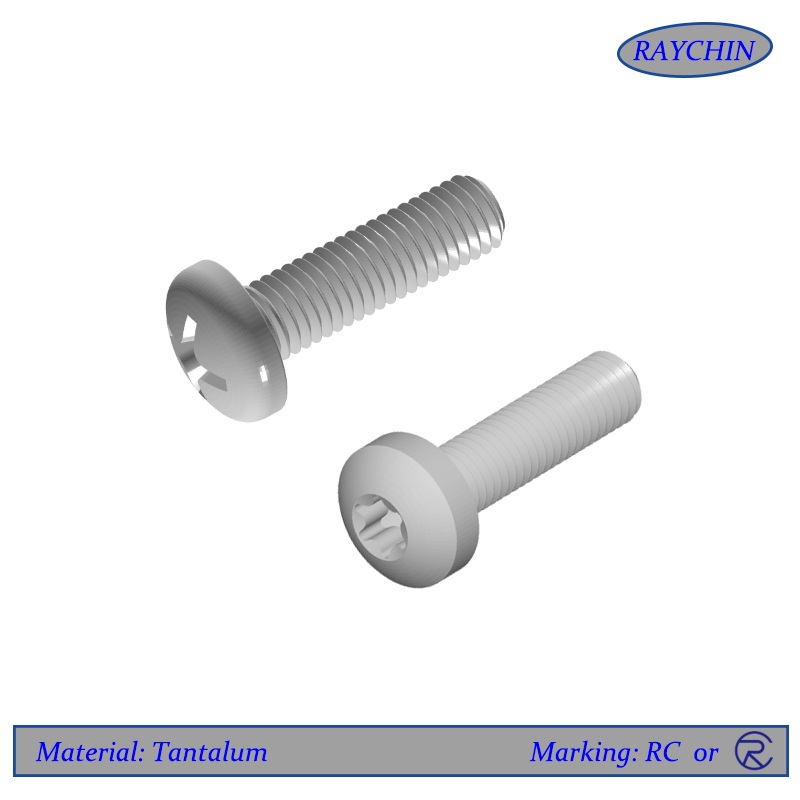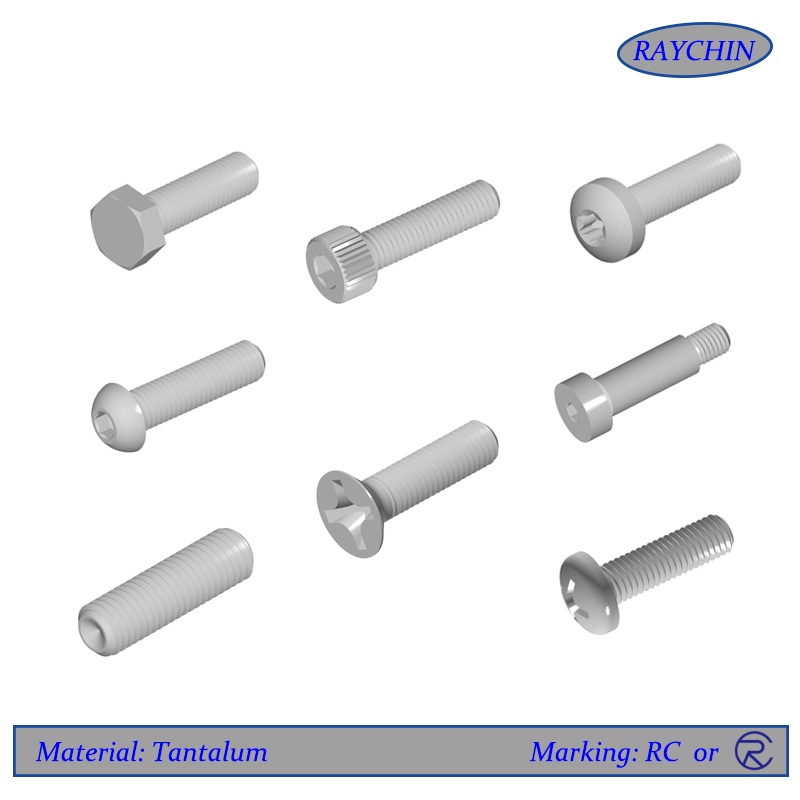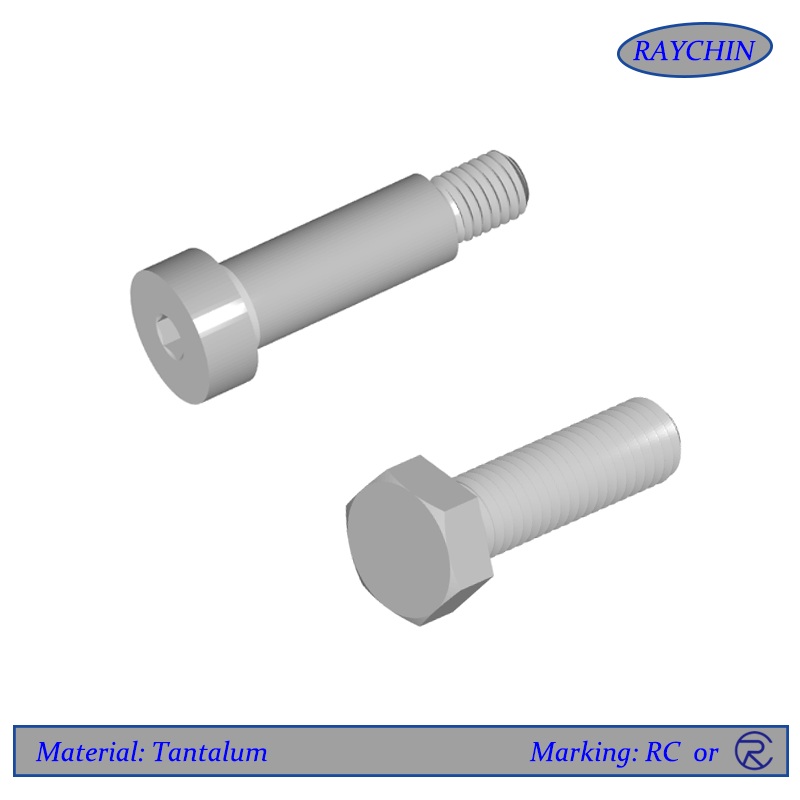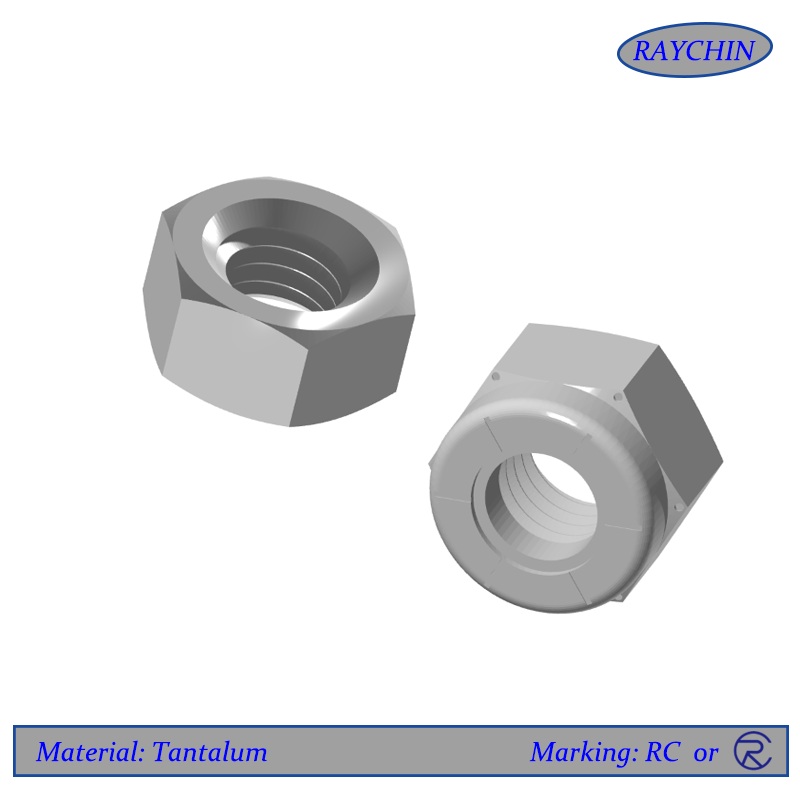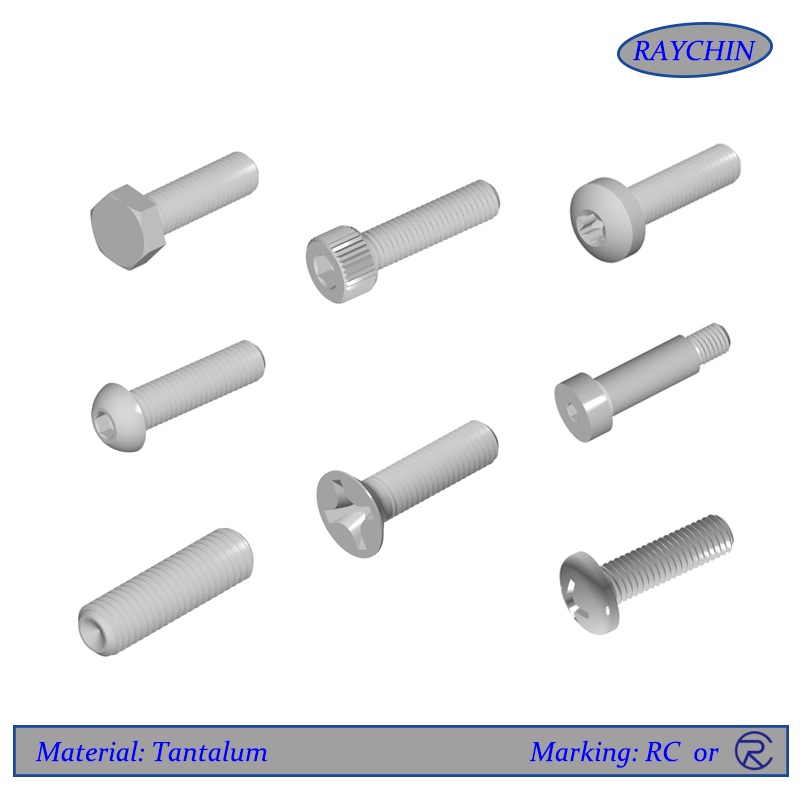
Tantalum Pan Head Screws
Brand RAYCHIN
Product origin CHINA
Delivery time 5-35 DAYS
Tantalum pan head screws are best known for its unmatched corrosion resistance and chemical inertness. Tantalum screws have a similar corrosion resistance to that of glass, but all of the typical mechanical and electrical properties of a metal.
Tantalum pan head screws are also extremely stable at high temperatures, since tantalum has a melting point around 3000°C. High temperature applications require vaccum or inert gas since tantalum may embrittle when used in oxygen rich environments above 250°C. Tantalum pan head screws are also one of the most bio-compatible metals available and is also radio-opaque due to its high density (16.68 g/cm3).
All tantalum screws are available in commercially pure tantalum and tantalum 2.5% tungsten (Ta-2.5%W).
Tantalum Pan Head Screws
Tantalum pan head screws are best known for its unmatched corrosion resistance and chemical inertness. Tantalum screws have a similar corrosion resistance to that of glass, but all of the typical mechanical and electrical properties of a metal.
Tantalum pan head screws are also extremely stable at high temperatures, since tantalum has a melting point around 3000°C. High temperature applications require vaccum or inert gas since tantalum may embrittle when used in oxygen rich environments above 250°C. Tantalum pan head screws are also one of the most bio-compatible metals available and is also radio-opaque due to its high density (16.68 g/cm3).
All tantalum screws are available in commercially pure tantalum and tantalum 2.5% tungsten (Ta-2.5%W).
When nickel, titanium or zirconium alloys are not enough...
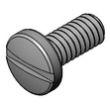
· Immune to numerous acids and chemicals (corrosion tables)
· Better corrosion resistance than nickel alloys, titanium or zirconium
· High strength and stiffness in vacuum and inert gas up to 2000°C (3600°F)
· Can become brittle when used in oxygen above 300°C
· High purity and biocompatibilty
· Physical Properties
· Tantalum grades, specifications and chemistry
· Datasheet for tantalum
· Tantalum pan head screw features and benefits
Resources: Tantalum Torque Spec
Screw Types: Button Head Cap Screws, Flat Head Screws, Hex Cap Screws, Pan Head Screws, Set Screws, Socket Head Cap Screws, Tamper Resistant Security Screws,
Tantalum Pan Head Screw Features and Benefits
Pan head screws are flat on top and rounded on the sides. Tantalum pan head screws are ideal for:
· Small diameter fasteners – especially when the fastener size needed is too small for a wrench.
· When phillips or slotted drivers are desired. For many high strength specialty alloys, only slotted drives are available.
· Low torque applications because the drivers don’t offer as much force as a wrench.
· Large diameter head provides more clamping area.
How Are They Different from Button Head Screws?
Tantalum pan head and button head screws have very similar profiles however, button head screws allow for a hex socket driver whereas pan head screws do not.
Tantalum Grades, Specifications and Chemistry
Tantalum (Commercially Pure)
Commercially pure tantalum metal is 99.95% pure tantalum has some o the best corrosion resistant properties of any metal. While its corrosion resistance is exceptional, it is relatively soft and mechanically similar in strength to copper.
Tantalum Specifications: UNS R05200, ASTM B521, B708
Tantalum (CP) | Ta | Nb | W | Mo | O | Ti | Ni | Fe | N | C | Si | H |
Max% | >99.95 | 0.100 | 0.050 | 0.020 | 0.015 | 0.010 | 0.010 | 0.010 | 0.010 | 0.010 | 0.010 | 0.010 |
Tantalum 2.5% Tungsten (Ta-2.5W)
This grade of tantalum alloyed with 2.5% tungsten provided better overall strength while maintaining its exception corrosion resistant properties. For tantalum fastener applications this is usually preferred.
Specifications: UNS R05252
Tantalum 2.5%W | Ta | W | Nb | Mo | O | Ti | Ni | Fe | N | C | Si | H |
Typical% | Bal | 2.5 | 0.50 | 0.020 | 0.015 | 0.010 | 0.010 | 0.010 | 0.010 | 0.010 | 0.005 | 0.002 |
Physical Properties
Density 16.6 g/cc
Melting Point 3290 K, 2996°C, 5462°F
Boiling Point 5731 K, 6100°C, 9856°F
Coefficient of Thermal Expansion (20°C) 6.5 x 10(-6) / °C
Electrical Resistivity (20°C) 13.5 microhms-cm
Electrical Conductivity 13% IACS
Specific Heat .036 cal/g/°C
Thermal Conductivity .13 cal/cm(2)/cm°C/sec
Tantalum Tensile Data
TANTALUM - Tensile Data
Temperature (°F) | Ultimate Tensile (ksi) | Yield Strength at 0.2% Offset (ksi) | Elongation % |
Room Temp. | 40.0 | 25.0 | 50.0 |
200 | 29.0 | 22.0 | |
400 | 28.0 | 12.0 | |
600 | 28.0 | 8.0 | |
800 | 27.0 | 2.5 |
TANTALUM 2.5% W - Tensile Data
Temperature (°F) | Ultimate Tensile (ksi) | Yield Strength at 0.2% Offset (ksi) | Elongation % |
Room Temp. | 50.0 | 35.0 | 25.0 |
200 | 48.0 | 30.0 | 15.0 |
400 | 42.0 | 27.4 | 10.0 |
485 | 40.0 | 25.5 | 10.0 |
Tantalum Iso-Corrosion Curves
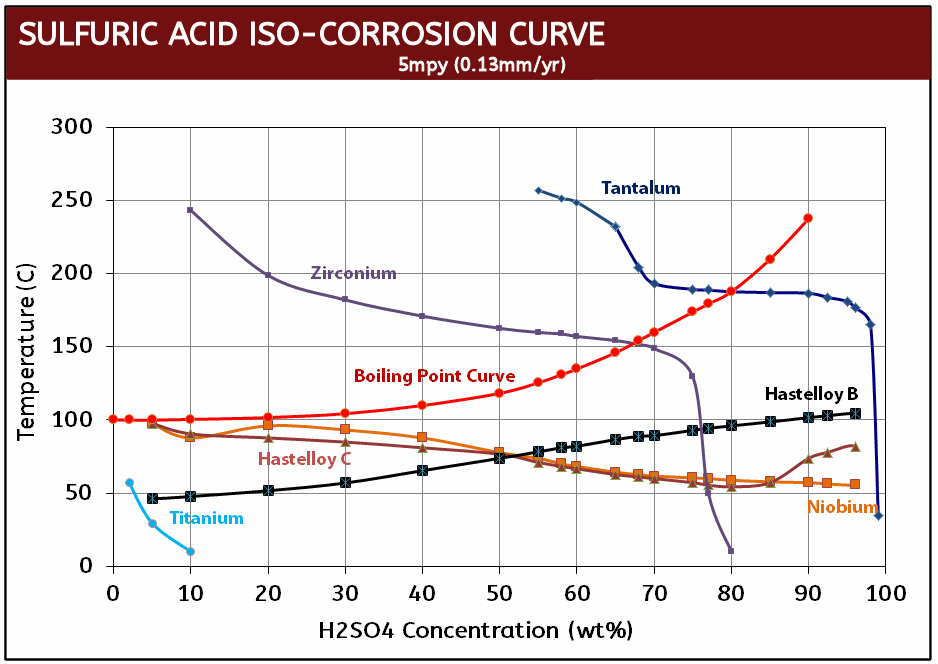
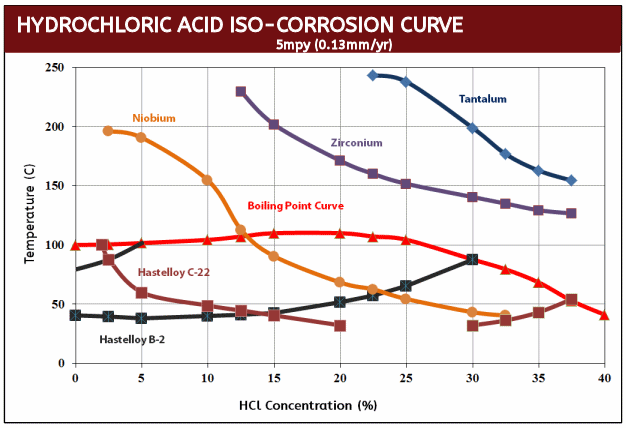
Tantalum Corrosion Resistance Table
TANTALUM SHOWS A NIL CORROSION RATE TO THE FOLLOWING MEDIA For all temperatures up to at least 302F (150C) unless otherwise indicated | |||
Acetic acid | Chlorine, dry, <250°C (480°F) | Maleic acid | Potassium sulfate |
TANTALUM SHOWS LIMITED CORROSION RESISTANCE TO THE FOLLOWING MEDIA | |||
Air,>300°C (570°F) | Hydrogen, >300°C (570°F)Hydrogen fluoride | Potassium hydroxide, conc. | Sodium hydroxide, conc. |


